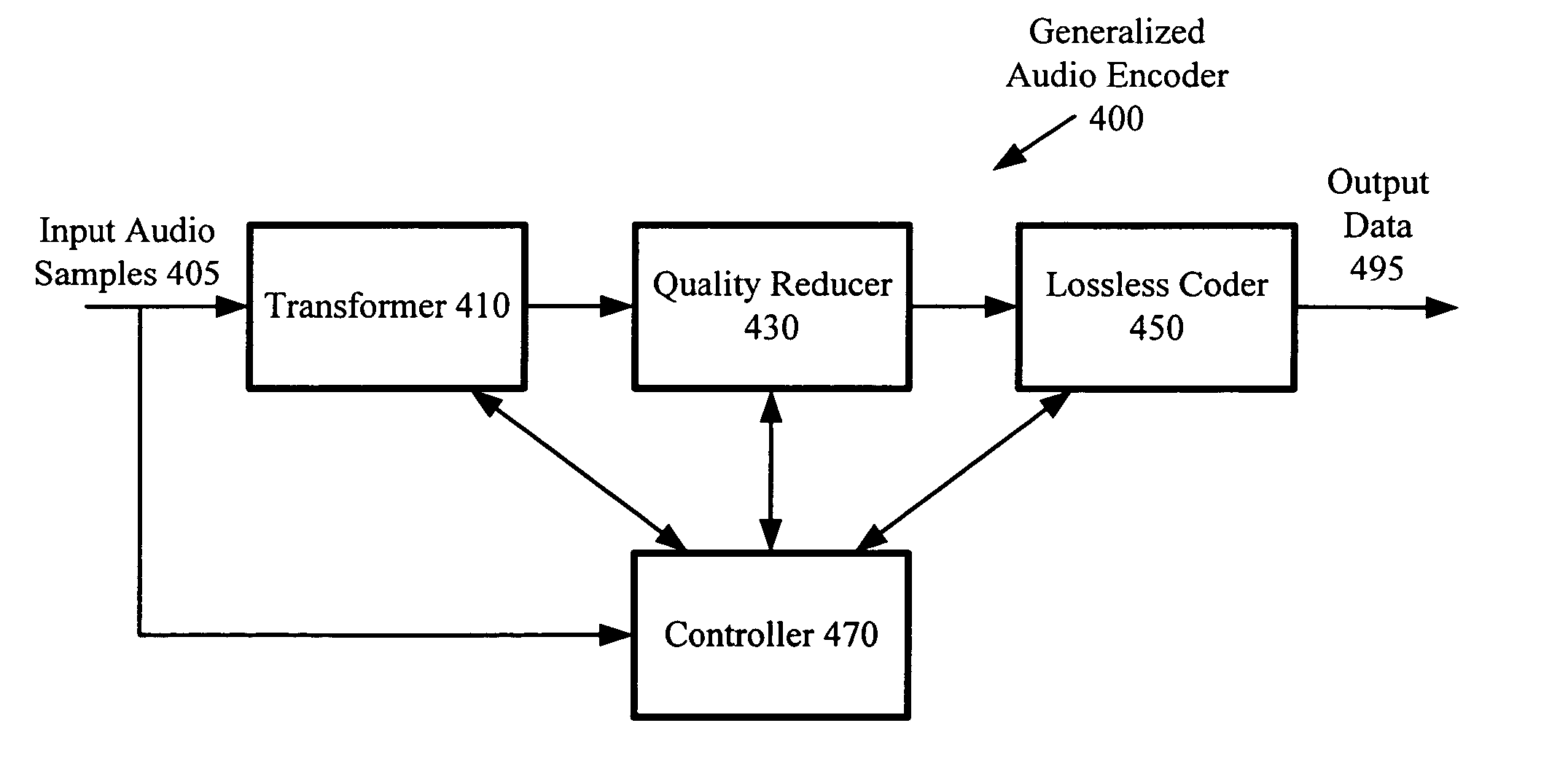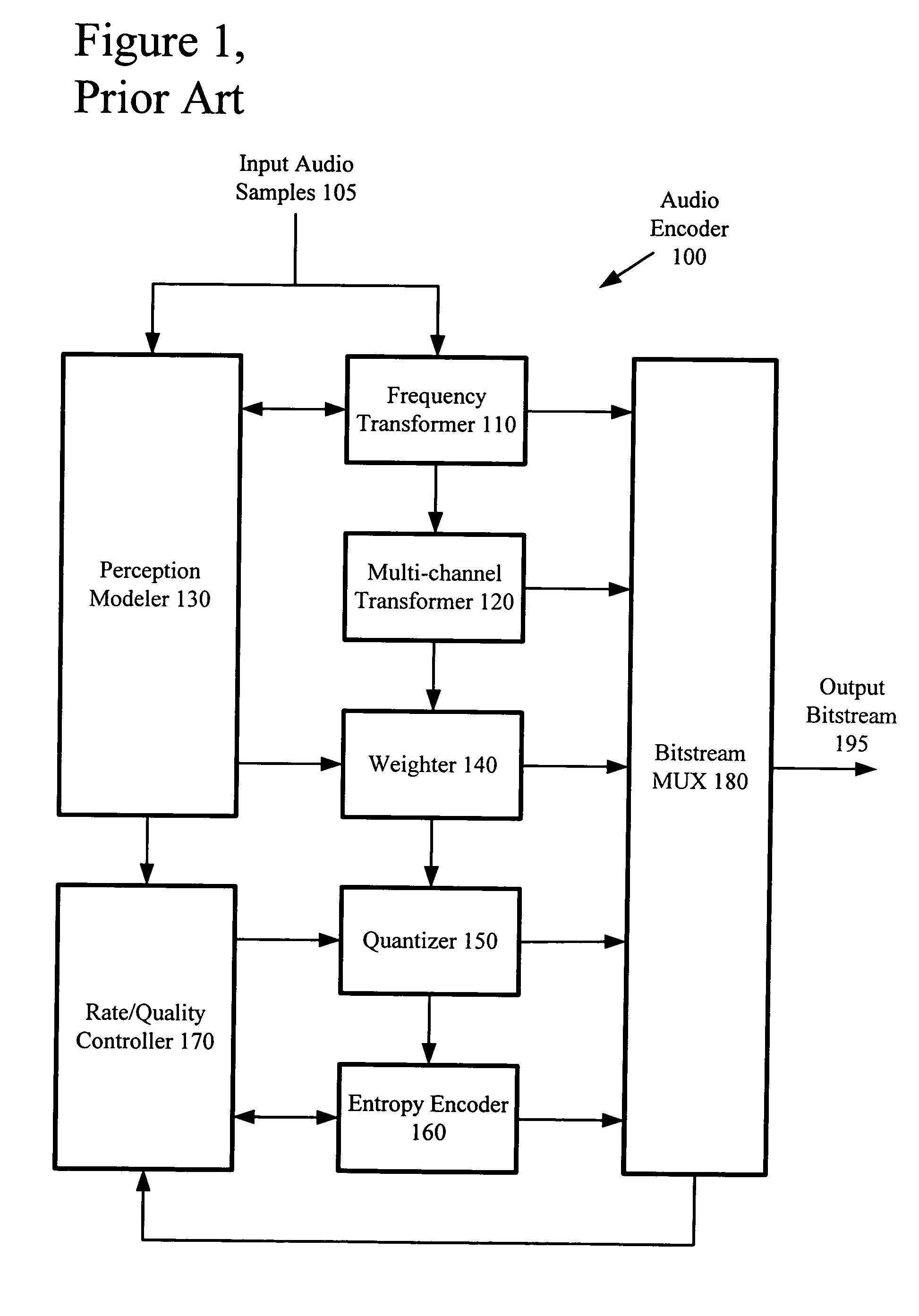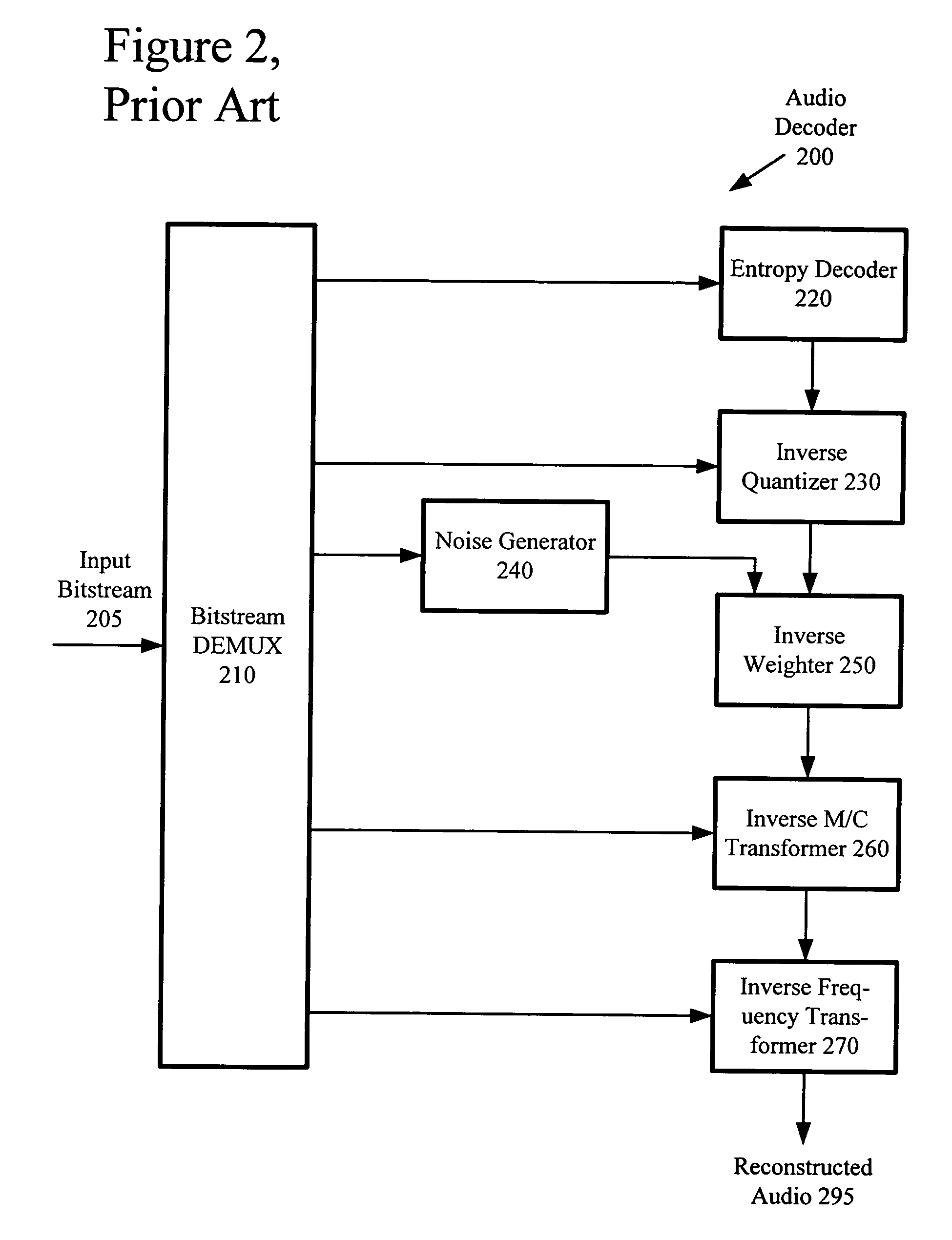Constant bitrate media encoding techniques
a constant bitrate, media encoding technology, applied in the field of media control strategies, can solve the problems of large amount of computer storage and transmission capacity, high bitrate of high quality audio information such as cd audio, and many computers and computer networks lack the resources to process raw digital audio, so as to reduce the bitrate and simplify the trellis
- Summary
- Abstract
- Description
- Claims
- Application Information
AI Technical Summary
Benefits of technology
Problems solved by technology
Method used
Image
Examples
Embodiment Construction
An audio encoder uses one of the CBR control strategies described herein in encoding audio information. The audio encoder adjusts quantization of the audio information to satisfy constant or relatively constant bitrate requirements for a sequence of audio data. When making an encoding decision for a given portion of a sequence, the encoder considers actual encoding results for later portions of the sequence, while also limiting the computational complexity of the control strategy. With the control strategies described herein, a CBR audio encoder overcomes the limitations of look-ahead buffers. At the same time, the encoder avoids the computational difficulties of an exhaustive search.
The audio encoder uses several techniques in the CBR control strategy. While the techniques are typically described herein as part of a single, integrated system, the techniques can be applied separately in quality and / or rate control, potentially in combination with other rate control strategies.
I...
PUM
 Login to View More
Login to View More Abstract
Description
Claims
Application Information
 Login to View More
Login to View More - R&D
- Intellectual Property
- Life Sciences
- Materials
- Tech Scout
- Unparalleled Data Quality
- Higher Quality Content
- 60% Fewer Hallucinations
Browse by: Latest US Patents, China's latest patents, Technical Efficacy Thesaurus, Application Domain, Technology Topic, Popular Technical Reports.
© 2025 PatSnap. All rights reserved.Legal|Privacy policy|Modern Slavery Act Transparency Statement|Sitemap|About US| Contact US: help@patsnap.com



